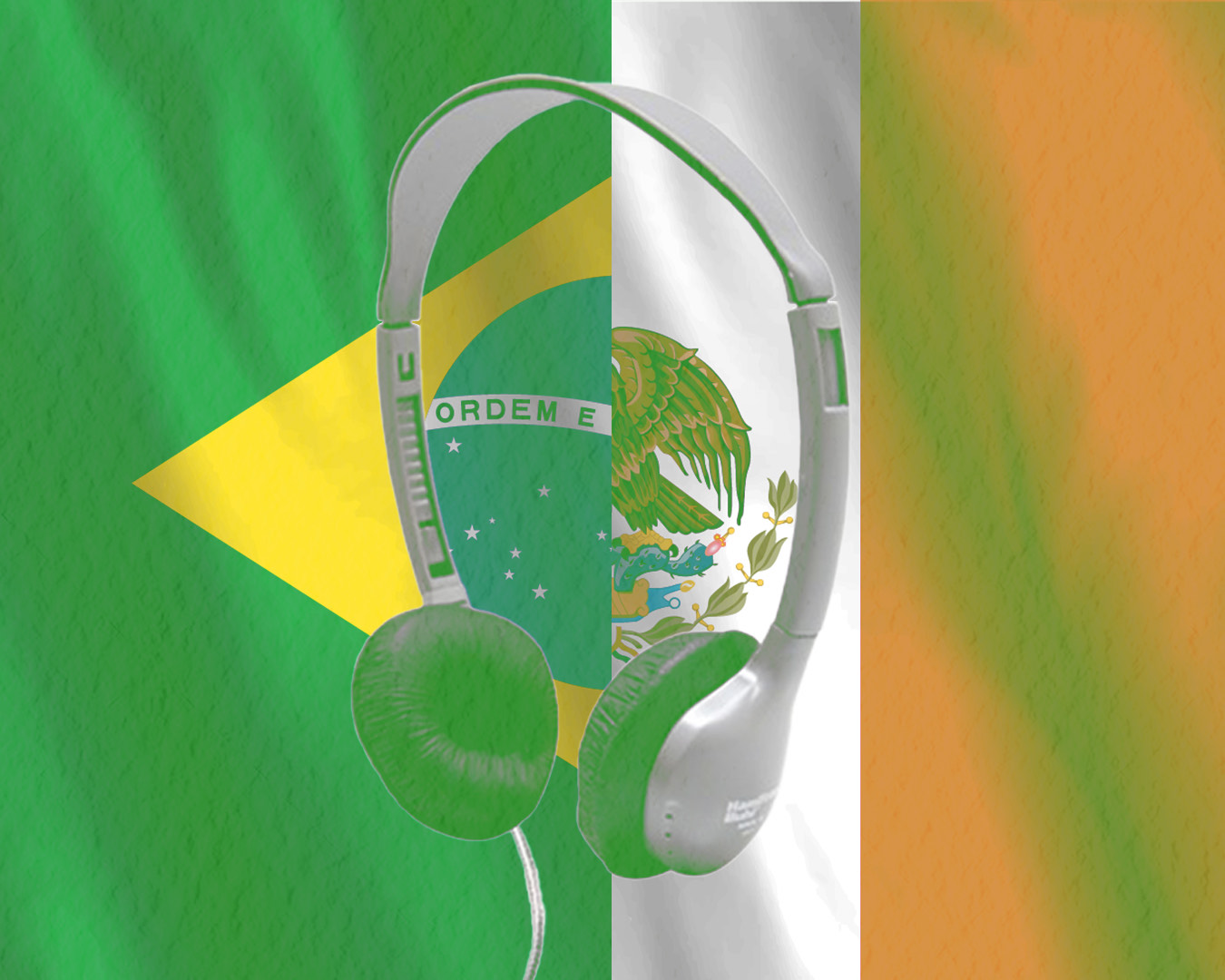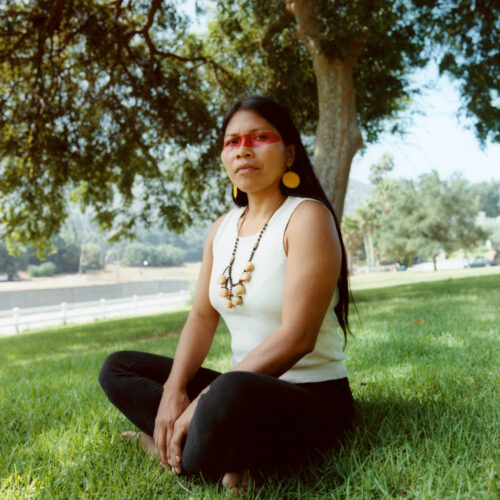There is no denying the world is obsessed with Latin music right now. From Bad Bunny’s unsurpassed 2022 World’s Hottest Tour revenue, to Shakira’s record-breaking BZRP Music Session, Latin artists are growing like never before. However, the Latin artists at the top of the charts are mostly representative of Reggaeton and Latin Pop. While it seems that these are the only genres fueling the global Latin explosion, the numbers show that other Latin American regional music genres are gaining popularity and propelling a wider variety of artists and sounds to the global stage.
A recent report by the music, data, and analytics company Chartmetric named multiple regional Mexican and Brazilian musicians as some of the fastest-growing artists worldwide, breaking barriers beyond their local markets and traditional fanbases.
One of 2022’s biggest revelations was Grupo Frontera, a Texas-based regional Mexican band that has achieved multiple Billboard Hot 100 entries less than a year since its inception. The six-man act currently boasts more than 18 million monthly Spotify listeners and 5.8 million daily YouTube channel views, a feat none of the band members could have imagined a couple months ago. “It started as a hobby, this is something unexpected,” 19-year-old vocalist Adelaido “Payo” Solis III said in an interview with Billboard. He continued, “I really like what’s happening and I’m very proud of everyone.”
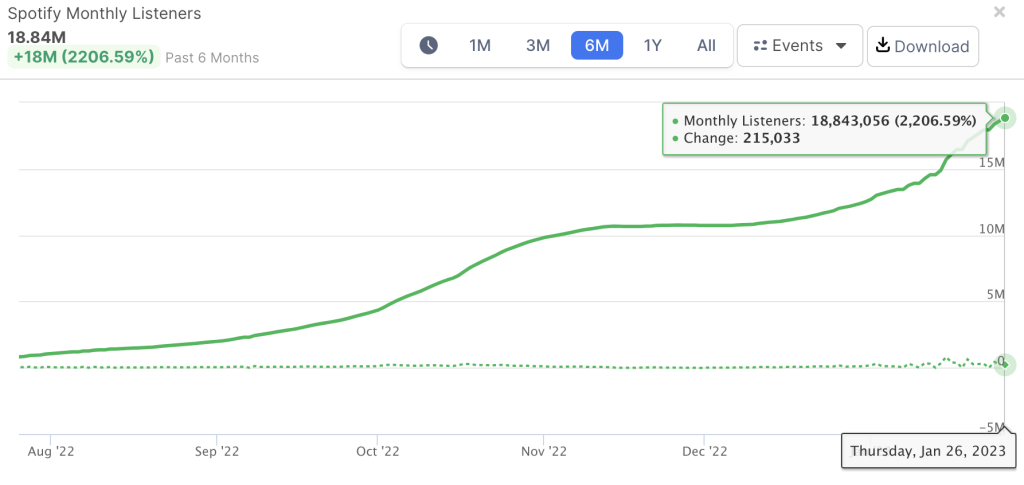
Grupo Frontera – Spotify monthly listeners growth in the last six months (via Chartmetric)
Grupo Frontera went viral on TikTok thanks to their Norteño style cover of Morat’s 2019 single “No Se Va.” The song has been used in 1.1 million TikToks and became the fifth ever regional Mexican song to reach Billboard Hot 100, peaking at #57. Their collaborations with Fuerza Regida and Carin León scored them two other entries to the Hot 100 in just three months.
While it is expected for a regional Mexican group to have a strong fanbase in Mexico and the United States, Guatemala City, Guatemala and Santiago, Chile are some of the top cities outside of Mexico with the highest number of Spotify listeners to Grupo Frontera. Regional Mexican genres like Norteño, Mariachi and Banda are growing strong in places that haven’t traditionally had large consumption and claiming a spot in the mainstream music canon. This could be because Grupo Frontera and several other newer regional Mexican acts are reinventing traditional genres to cater to Gen-Zers, often drawing inspiration from reggaeton and Latin Pop, the predominant genres among young Latinos.
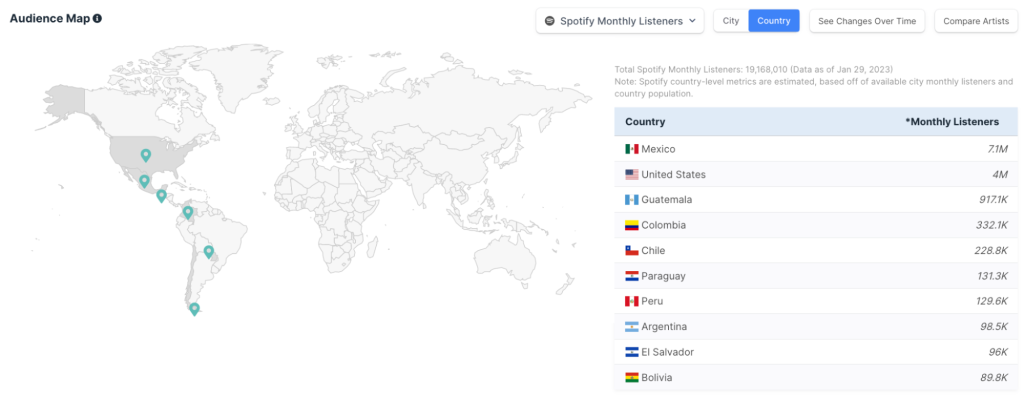
Grupo Frontera – Map of Spotify monthly listeners distribution by city (via Chartmetric)
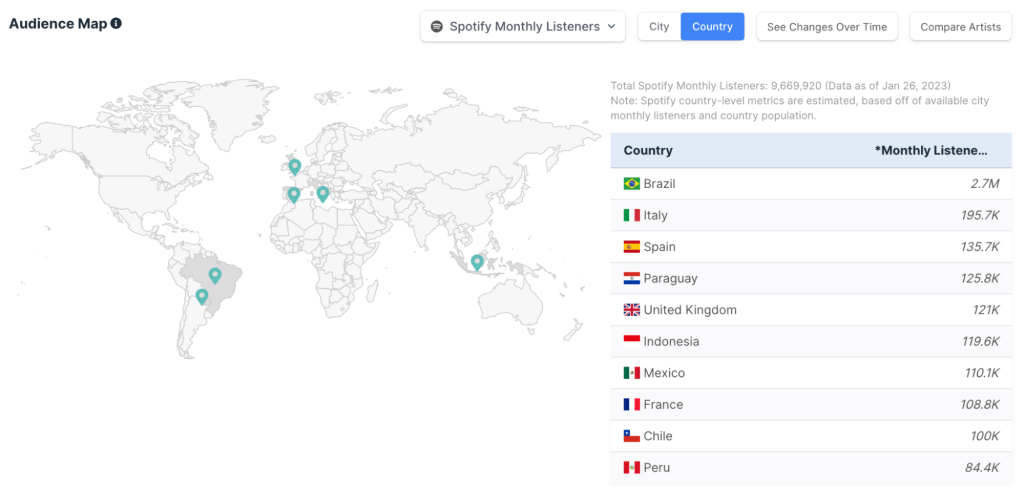
Grupo Frontera – Map of Spotify monthly listeners distribution by city (via Chartmetric)
Brazilian artists are also taking over the world with their regional genres, Funk Carioca in particular. The genre combines international styles like Hip-hop and electronic music with local sounds like Samba to create an explosive dance-inducing rhythm. Born in the Brazilian favelas, Funk Carioca and Brazil’s biggest artist, Anitta, have gone beyond the Portuguese-speaking world to become global sensations.
Anitta found international success singing largely in Spanish and English, but her roots, and some of her most iconic tracks, are in the Funk Carioca genre. Her rising popularity gives more exposure to the Brazilian genre globally. “I’ve traveled a lot to try to educate people on funk music and ‘ghetto’ music — favela music — coming from Brazil to other countries and other artists,” Anitta told TIME Magazine. She added “Funk music for example, it’s also a challenge to make it play for the Latin world. So, I’m matching and switching cultures and people.”
According to Chartmetric’s report, multiple Funk Carioca artists showed exponential growth in the second half of 2022 including Dj LK da Escócia. The explosive rise of the Brazilian artist comes after one of his tracks went extremely viral on TikTok: “Tubarão Te Amo” with MC Ryan SP, MC Daniel, MC RF, MC Jhenny, and Tchakabum. The Funk track has been used in more than 1.9 million videos by people all over the world including one of TikTok’s most-followed creators Bella Poarch. Thanks to the social media exposure, Dj LK da Escócia now has Spotify listeners across the globe, with places like the United Kingdom and Indonesia in his top 10 countries with the most listeners.
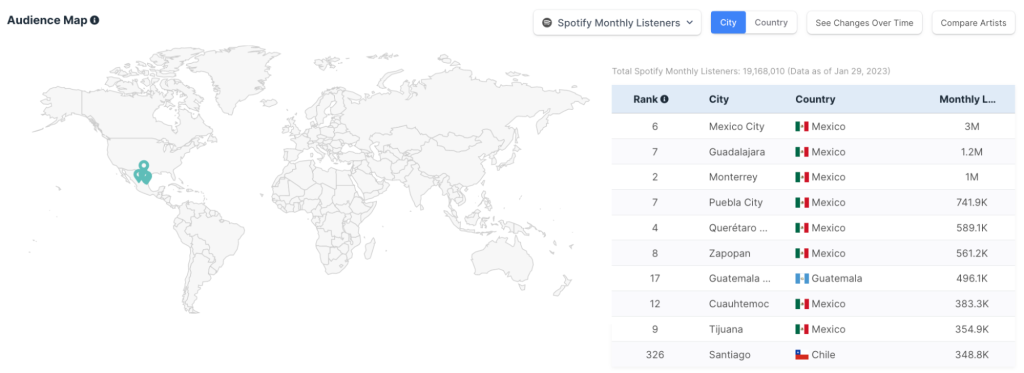
Dj LK da Escócia – Map of Spotify monthly listeners distribution by country (via Chartmetric)
As we enter into this new year, expect to see more Latin artists who aren’t in the reggaeton sphere rising in the charts, while highlighting the diversity of music genres we have in the region and the richness of our cultural heritages.
